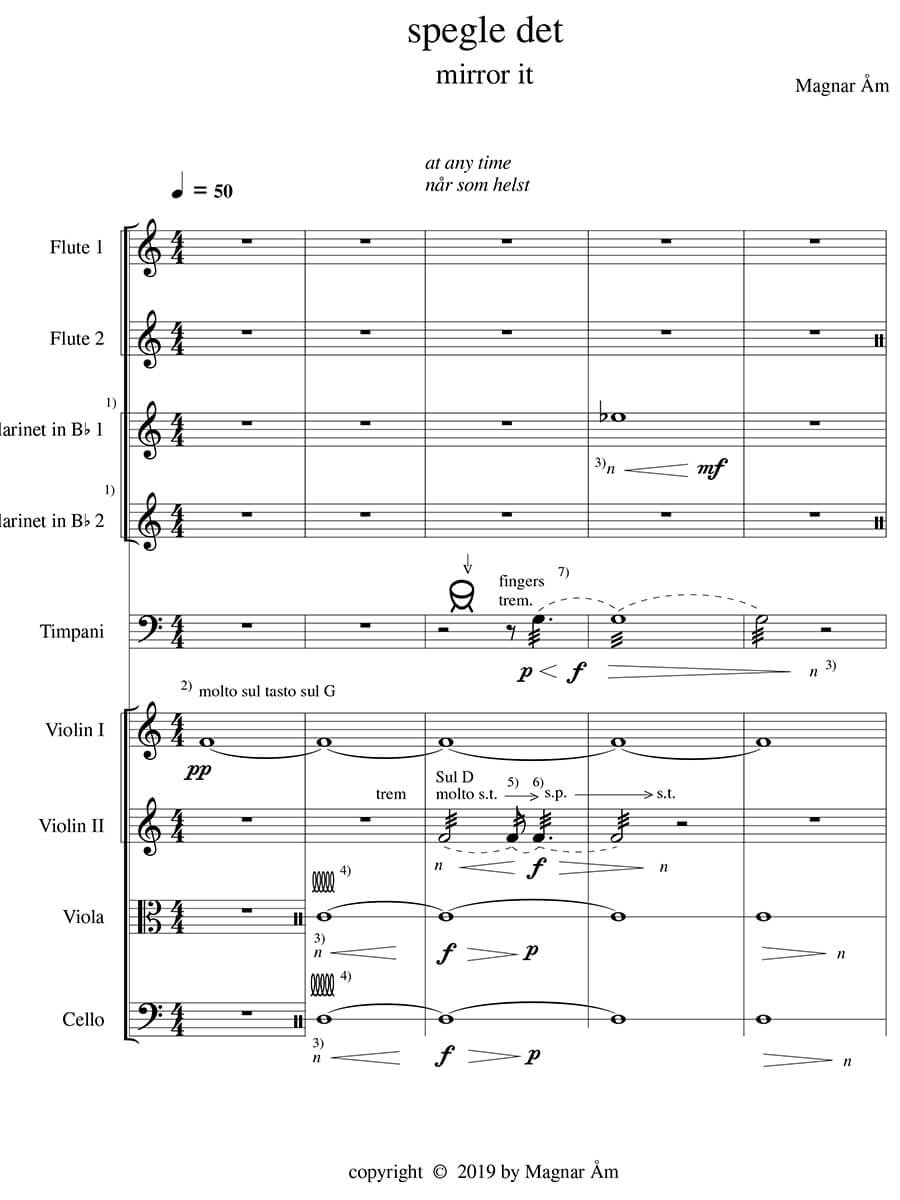Spegle det for orchestra (first print)
Åm, Magnar
22,00 €
Preface
Magnar Åm – Spegle det (1988)
(b. April 9, 1952)
Magnar Åm (pronounced “Ohm”) was born in Trondheim.
His interest in music revealed itself from early childhood and he began to write small pieces around the age of eleven. He did this in order to make sense of his inner struggles. It was then that he discovered (in his own words) “what a helpful friend music can be”. He describes the process as “going around with an emotional knot and yet making something out of it that sounded beautiful and that others appreciated – a process of metamorphosis”. The piano (his instrument of choice) became “a very close friend”. (All the above citations, as well as much of the information under these lines, come from an interview with the composer I conducted on December 7th 2013 in connection with the writing of my book “Opus Perseverat”, Musikproduktion Höflich 2017).
As a 16 year old Åm travelled to Bergen in order to attend high school and get a musical education. He attended the U. Pihl School where he received encouragement from Kjell Leikvoll (1924 – 2019). Simultaneously Åm studied organ with Thorleif Aamodt (1909 – 2003). These organ studies culminated in a debut concert and the acquisition of an organist and cantor diploma in 1971. He also found time to take composition lessons with Ketil Hvoslef (b. 1939), conducting lessons with Magnar Mangersnes (b. 1938) and jazz lessons with the pianist Eivin Sannes (1937 – 2019). With Trygve Fischer (1918 – 1980) he learned score reading, using the old clefs.
Keil Hvoslef was the first person who gave Åm serious feed-back on matters of composition in a contemporary language. The singular most important contribution from Hvoslef, as Åm recalls, was the search for freshness in every note, a principle by which Åm (and, indeed, Hvoslef) lives to this day.
In the obligatory conservatoire study of traditional harmony Åm found a strong sense of the importance of maintaining a singing quality in every voice. He also realized the vital importance of the distance between the voices: how different two voices sound when they are close to one another in the high register versus the low register: the higher the register, the more consonant dissonances become. These realizations would serve him well in his later work as a consummate choir conductor and composer of choral music.
In return for free room and board Åm worked two hours every evening as a pianist at the restaurant of the Terminus Hotel. Given Åm’s inquisitive nature, he used this experience also as a learning process. He closely monitored the effect his music was having on the restaurant guests and adjusted his playing accordingly.
In 1971 Åm travelled to Stockholm to continue his composition studies with Ingvar Lidholm (1921 – 2017). …
Read full preface > HERE
Score Data
| Special Edition | Amethyst Edition |
|---|---|
| Genre | Orchestra |
| Size | 210 x 297 mm |
| Performance Materials | available |
| Printing | First print |
| Pages | 48 |
